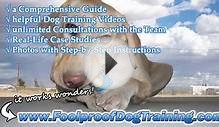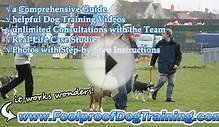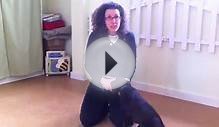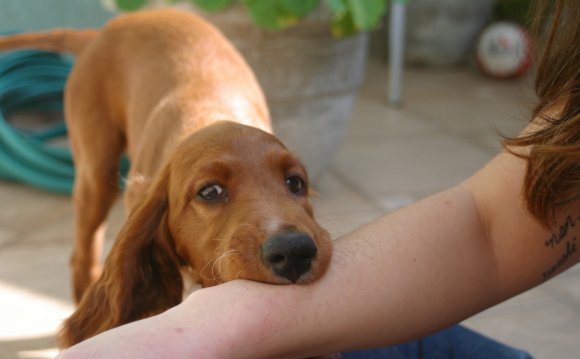
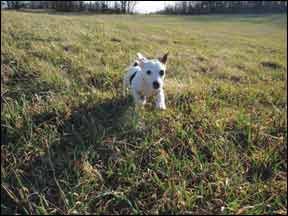
Your high-energy, hyperactive dog can learn calming behavors. Here's how to help him relax...
Boy, do I wish I had a dollar for every time I heard someone say their dog was “hyperactive” or “ADHD” – I’d be a wealthy woman. In fact, those are clinical terms referring to very specific behavioral disorders (canine and human) that are relatively uncommon in dogs. In reality, most “hyper” dogs are just under-exercised. A couple of days hiking at the Peaceable Paws farm and you’d hardly know them.
Like many young dogs of active breeds, Squid needs a lot of intense exercise in order to be capable of focus and participation in training. Walking around the block doesnt cut it for dogs like this.
 Not every dog owner has access to large tracts of acreage upon which to exercise their unruly canines, and in any case, “wild child canine syndrome” (WCCS) is more than just lack of exercise; it’s also lack of appropriate reinforcement for calm behavior – i.e., training. Unfortunately, all too often a dog loses his happy home – maybe even his life, as a result of his high-energy behavior.
Not every dog owner has access to large tracts of acreage upon which to exercise their unruly canines, and in any case, “wild child canine syndrome” (WCCS) is more than just lack of exercise; it’s also lack of appropriate reinforcement for calm behavior – i.e., training. Unfortunately, all too often a dog loses his happy home – maybe even his life, as a result of his high-energy behavior.
We’ve seen several of these WCCS dogs at the training center in recent weeks. One private client decided to return her Shar-Pei-mix to the rescue from whence the pup came. Despite her best intentions and efforts, the client had mobility challenges that made it impossible for her to provide the pup with the exercise and management she needed. As painful as it was for the owner, returning the pup was the right decision.
WCCS dogs often include inappropriate biting in their repertoire of undesirable behaviors. We currently have a temporary foster resident at the training center: a 13-week-old high-energy Jack Russell Terrier who failed his assessment at the shelter for using his mouth in protest when restrained.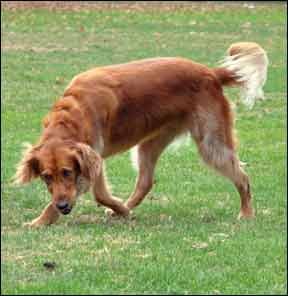 Little Squid is a perfect example of the kind of dog who needs to learn self-control and the art of being calm.
Little Squid is a perfect example of the kind of dog who needs to learn self-control and the art of being calm.
A successful WCCS behavior modification program contains three elements: physical exercise, management, and training. While any one of these alone can make your high-energy dog easier to live with, apply all three for maximum success. Let’s look at each of these elements in greater detail.
Exercise and Activity is Key for Managing Hyperactivity
Squid’s day begins with an hour of barn-play while we do chores. He delights in harassing our dogs (and our pig). He gets at least one long hike around the farm per day, preferably two, or even three. He also gets one or more sessions of ball/toy fetch in the training center, and some puppy socialization/play time when there’s a class going on.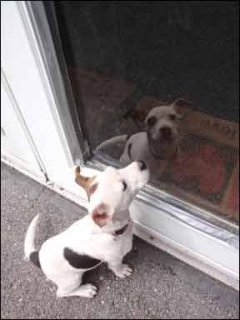 Finally, he wraps up his day with evening barn chores. Does it tire him out? No. I have yet to see him tired. But it does take the edge off, so that when I work with him to teach calm he is able to focus and participate in the training. The physical exercise sets him up for training success.
Finally, he wraps up his day with evening barn chores. Does it tire him out? No. I have yet to see him tired. But it does take the edge off, so that when I work with him to teach calm he is able to focus and participate in the training. The physical exercise sets him up for training success.
The Manners Minder enables you to dispense a treat to your dog some distance away from you.
Not everyone has an 80-acre farm to play on. If you’re farm-deprived, there are other ways to provide exercise for your WCCS dog. A placid walk or three around the block won’t do it. Nor will leaving him on his own in your fenced backyard. He needs to be actively engaged.
Outings to your local well-run dog park can be a good exercise option. If you don’t have one in your area, invite compatible canines over to play in your dog’s fenced yard. If you don’t have one, invite yourself and your dog over to your dog-friend’s fenced yard for play dates.
Absent any access to a dog-friendly fenced yard, play with your dog on a long line. A 50-foot line gives him a 100-foot stretch to run back and forth and work his jollies off.
YOU MIGHT ALSO LIKE
